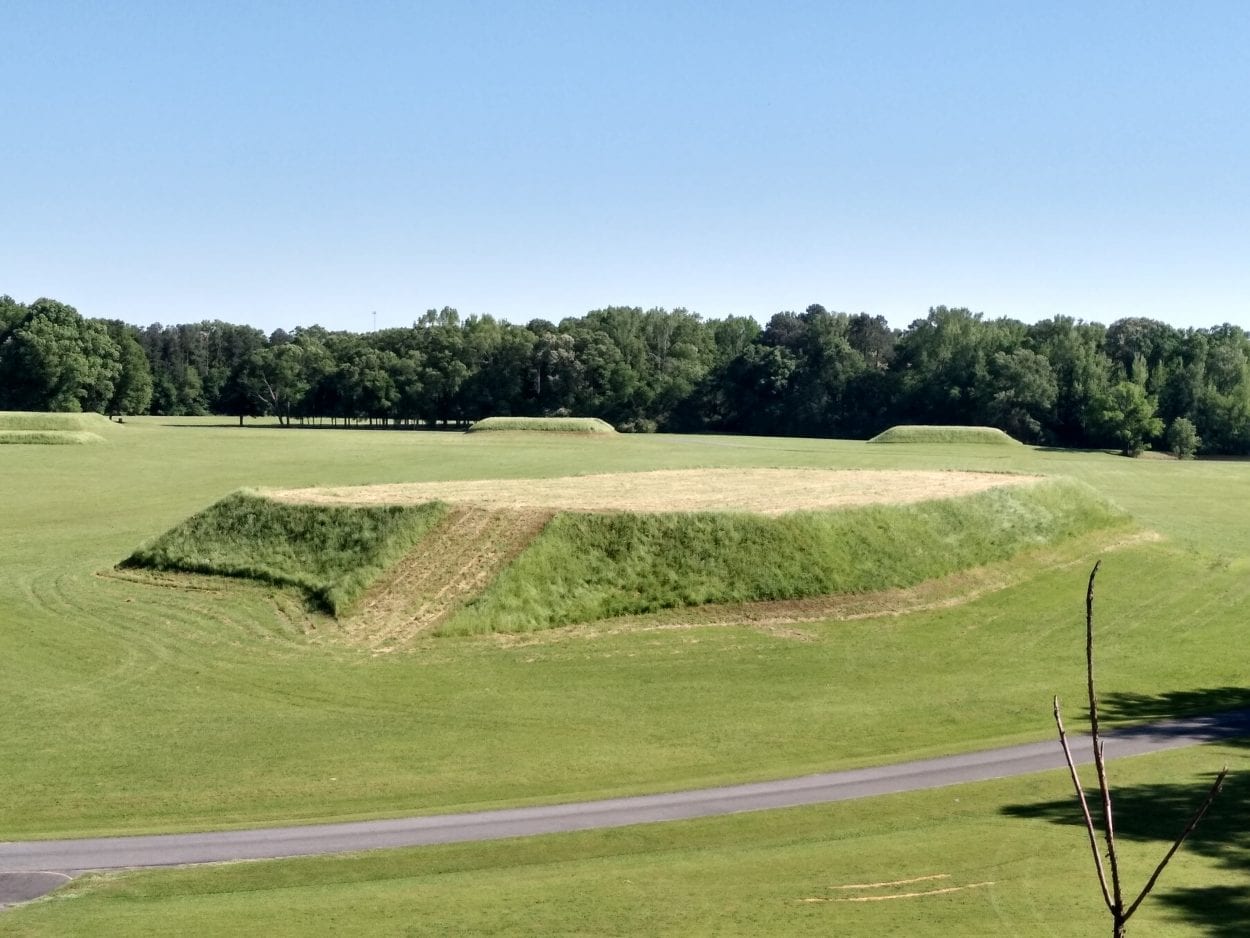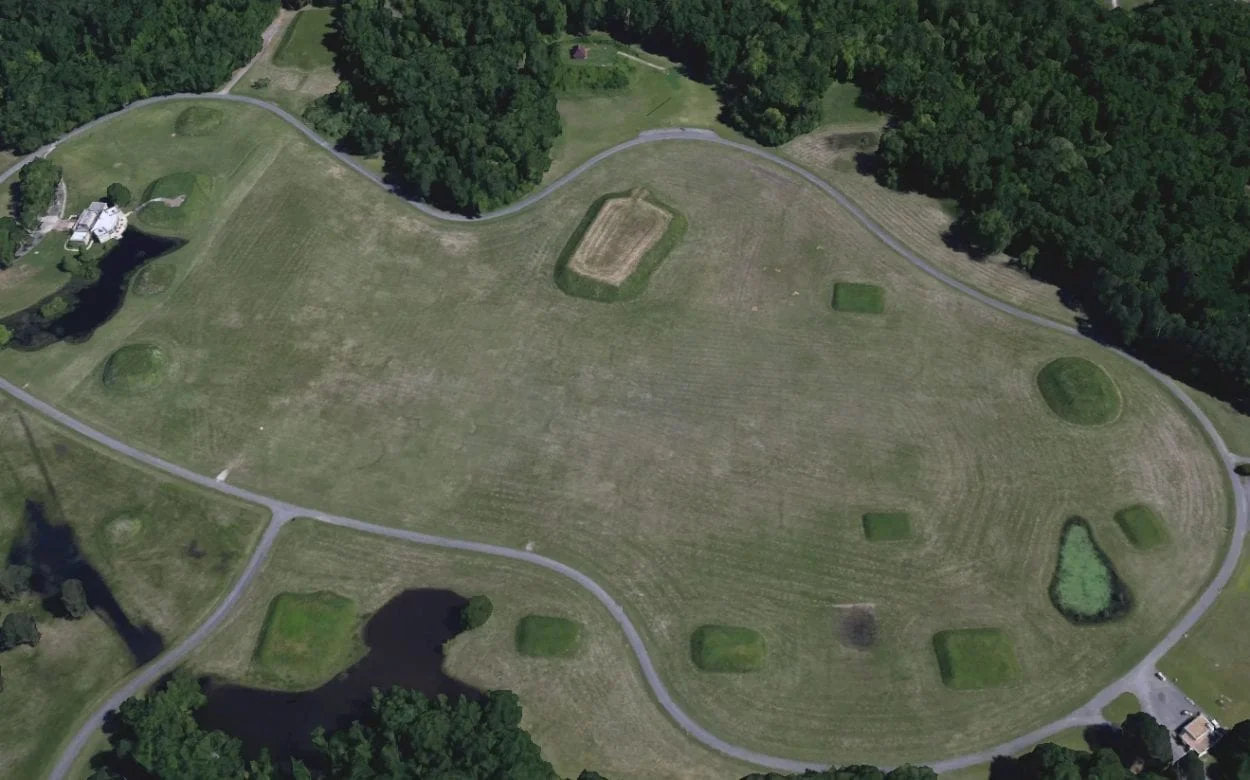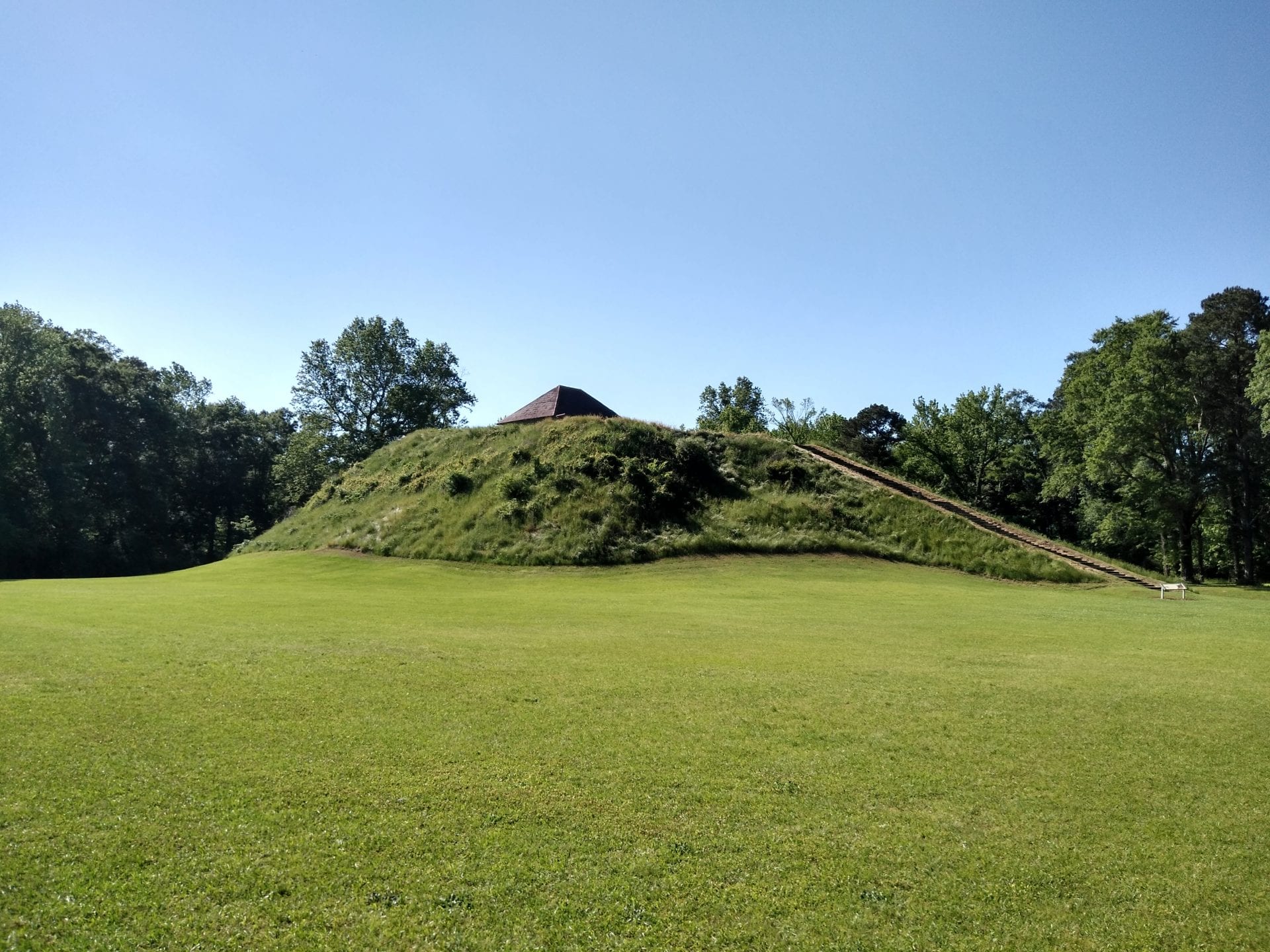The Moundville Archaeological Site is an ancient tribal centre of the Mississippian culture, that built a large settlement comprising of raised mounds in the present-day state of Alabama near the banks of the Black Warrior River, in the United States.
The Mississippian culture was a Native American civilisation that emerged around AD 800 in the Mid-western, Eastern, and South-eastern regions of America.
Settlement of Moundville began around AD 1000 during the classic Middle Mississippian era, emerging as a seat of organised chiefdom polity that developed into a regional political and ceremonial centre.
From AD 1350, the inhabitants started to construct 29 truncated earthen pyramid platform mounds that range from 3 to 60 feet in height, orientated around a central plaza for ceremonial gatherings and games. The largest mounds were constructed on the northern edge of the plaza, decreasing in size along the orientation around the plaza to the south.

Archaeologists suggest that the north/south orientation reflects the ranking in hierarchy, with the northern mounds being occupied by the societal elite, and the smaller mounds supporting buildings used for common residences, mortuaries, and other purposes.
Surrounding the settlement was a bastioned wooden palisade wall, suggesting that the people of Moundville were regularly involved in periods of conflict with neighbouring urban centres.
At its height, the population of Moundville is estimated to have been around 1000 people within the walls, with 10,000 additional people living in villages and farmsteads in the surrounding countryside.
The decline of the major Mississippian centres such as Moundville appears to have occurred during the latter part of the fifteenth and early sixteenth centuries AD. By the 1500s, most of the area was abandoned, with only small pockets of habitation in the surrounding villages.
Moundville was declared a National Historic Landmark in 1964 and was added to the National Register of Historic Places in 1966.

Header Image Credit : Donn-beckh – Shutterstock





